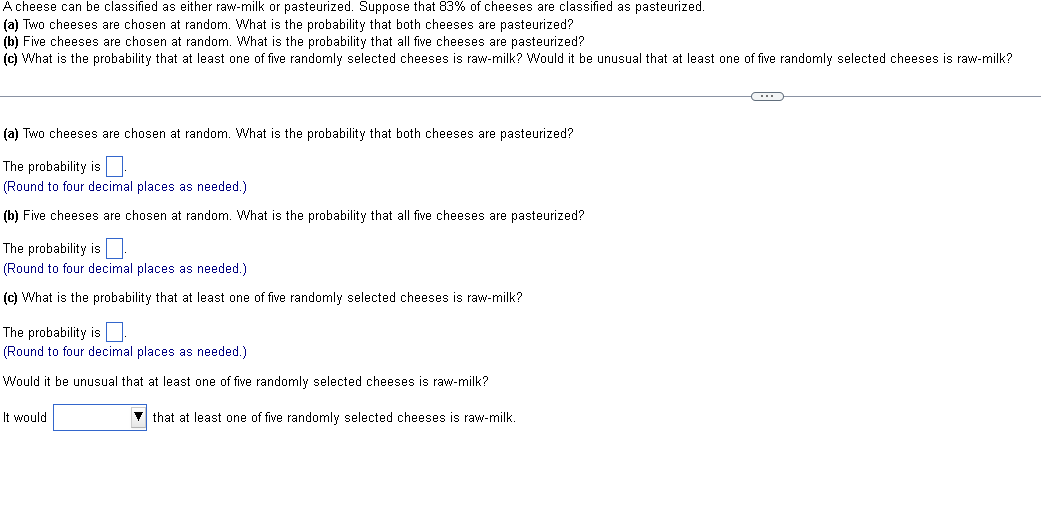Home /
Expert Answers /
Statistics and Probability /
a-cheese-can-be-classified-as-either-raw-milk-or-pasteurized-suppose-that-83-of-cheeses-are-class-pa129
(Solved): A cheese can be classified as either raw-milk or pasteurized. Suppose that 83% of cheeses are class ...

A cheese can be classified as either raw-milk or pasteurized. Suppose that of cheeses are classified as pasteurized. (a) Two cheeses are chosen at random. What is the probability that both cheeses are pasteurized? (b) Five cheeses are chosen at random. What is the probability that all five cheeses are pasteurized? (c) What is the probability that at least one of five randomly selected cheeses is raw-milk? Would it be unusual that at least one of five randomly selected cheeses is raw-milk? (a) Two cheeses are chosen at random. What is the probability that both cheeses are pasteurized? The probability is (Round to four decimal places as needed.) (b) Five cheeses are chosen at random. What is the probability that all five cheeses are pasteurized? The probability is (Round to four decimal places as needed.) (c) What is the probability that at least one of five randomly selected cheeses is raw-milk? The probability is (Round to four decimal places as needed.) Would it be unusual that at least one of five randomly selected cheeses is raw-milk? It would that at least one of five randomly selected cheeses is raw-milk.
Expert Answer
(a) If 83% of cheeses are classified as pasteurized, then the probability that the first cheese chosen is pasteurized is 0.83.Therefore, the probability that both cheeses are pasteurized is:P(both pasteurized) = P(first pasteurized) × P(second pasteurized | first pasteurized) P(both pasteurised) = 0.6889